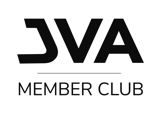The Importance of Strength & Conditioning and Rest in High-Level Athletes
May 3, 2019 Author: Kristen Falcinelli, Virginia Elite Coach
All athletes have probably heard a coach or trainer tell them strength training, conditioning, and rest are important to their ability to perform and improve. Many players think if they are well conditioned, they will have better endurance for long tournament days and won’t feel tired while playing. While this may be true in some cases, there are many other benefits that are arguably more important to contributing to the overall success of the athlete.
I did not know the importance of these things when I was younger. I thought that just by being in shape from playing sports, I was doing enough for myself. I had been a multi-sport athlete and ended up with “overuse” injuries as a result of constantly running, jumping, and tearing apart my body. I rarely had a rest day, and my days were consumed from playing and practicing without any other type of training. If I had a diversified training approach and adequate rest, I probably could have avoided some injuries and been a stronger overall athlete. Understanding the importance strength and conditioning and rest play in training from a young age will set athletes up for prolonged success and will enhance their natural ability.
Strength and Conditioning:
When you hear the phrase “strength and conditioning” you probably think of weightlifting and sprinting. While these things are included, there are other types of exercise that are in this category as well. In general, strength and conditioning includes all types of exercises that contribute to the overall development of the athlete. Stretching, mobility exercises, core stability exercises, and agility training are other types of exercise that are included in “strength and conditioning”. Yoga, deadlifts, planks, box jumps, ladder drills, and band exercises all very strength and conditioning exercises, but each can provide some benefit to athletes.
There are many benefits to including different types of exercises in training for your sport. By increasing strength, flexibility, speed, and agility, the athlete maximizes their physical ability. Certain exercises can also translate directly into game play. Box jumps, for example, can teach an athlete to land properly on both feet. Banded squats can train a player’s knees to stay straight and not turn in (which can cause a lot of injuries over time) while running or jumping. Specifically translating this to volleyball terms, a player may be able to jump higher, shuffle to a ball faster, and hit harder after training in this manner. This can contribute to a confidence booth in the athlete, allowing them to believe in themselves and push themselves harder to compete at a higher level.
Having better flexibility, mobility, and increased strength also decreases an athlete’s chances of suffering from chronic injuries. Chronic injuries include things like tendonitis, shin splints, and rotator cuff impingement. These types of injuries often occur due to muscular imbalances- when one side of an athlete’s body is stronger than the other. Strength training can correct this. Furthermore, when muscular strength is increased, joints are better protected, and are therefore less likely to suffer injury.
Rest:
Rest is one of the most fundamental things to athlete success, but unfortunately is one of the most overlooked. Many athletes have the mindset that if they are not on the court or in the weight room, they are not doing enough to improve. However, a smart athlete knows how important rest is! Periods of rest give muscles a chance to repair and rebuild. Rest also provides a chance for psychological recovery from the stress of competition. The most obvious type of rest is sleep. Sleep is essential for mental and physical recovery, and is especially important in nights before competitions. Athletes that do not get adequate sleep have demonstrated a loss of aerobic endurance.
Resting does not mean you have to sit on the couch all day- “active rest” includes low-impact activity like stretching and mobility exercises. Rest also includes proper hydration and nutrition. Fueling your body properly during rest periods prevents further muscle breakdown and enhances the ability of muscles to repair themselves.
Now, when your coach tells you how important rest or strength and conditioning is, you will have a better understanding. Diversify your training, get adequate rest, become better athletes, and kick butt out on the court!
We are…. ELITE!










